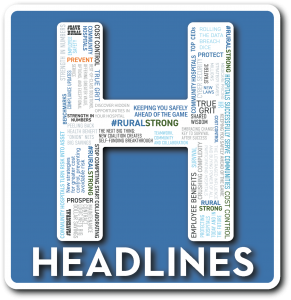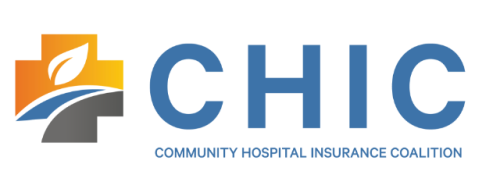In this Issue
A Rural Vaccine for the Medicare Advantage Pandemic?
Patient education and local advocacy can be effective antigens
By Brant Couch | CEO HealthSure
(Note: This article includes content from staff interviews with John Henderson, President Texas Organization of Rural and Community Hospitals (TORCH), Alan Morgan, CEO National Rural Health Association (NRHA), and a comment from Scott Pruzan, the managed care and direct contracting specialist at HealthSure.)
Of the many rural hospital CEOs I have spoken with this year, all have shared their concern over the rapid spread of Medicare Advantage (MA) within their communities.
It is true that traditional Medicare has its own set of problems but frankly, the problems created in rural healthcare by MA are worse. Good intentions aside, the spread of MA into rural communities has not:
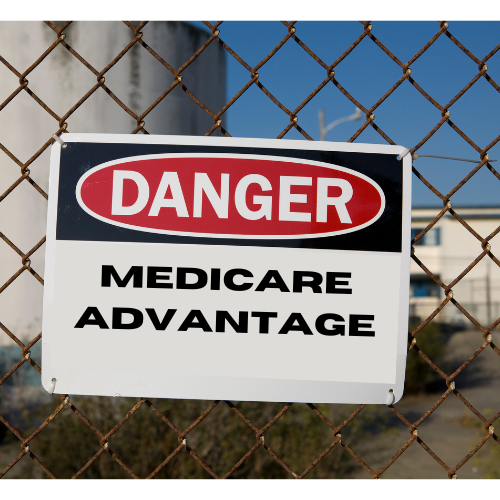
- Made healthcare more affordable or accessible for people over 65 in rural communities
- Empowered higher quality healthcare delivery by rural providers – especially critical access hospitals
- Lowered the financial burden our government bears for providing rural American seniors with even a minimally reasonable standard of healthcare
On the contrary, MA has:
- Grown rapidly and now provides coverage to 51% of Medicare beneficiaries while accounting for 55% of federal Medicare spending
- Sparked a dramatic increase in claim denials (they jumped 100% from 2021 to 2022)
- Driven payer concentration: 61% of the MA market is controlled by only three for-profit insurance companies (UnitedHealthcare, Humana, and Elevance)
- Enriched payers with margins almost twice that of all other product lines
- Given payers increased leverage to further reduce reimbursement rates
- Dramatically increased the administrative burden for hospital administrators
- Given over the control of patient healthcare decisions to faraway insurance companies
- Encouraged patients to seek care outside of their local communities

The Patient Education Antigen
A vaccine’s primary ingredient is an altered form of a disease-causing pathogen (virus, bacteria or toxin). Called an antigen, it no longer causes the disease but
instead produces an immune response that protects us from the disease.
Running with the metaphor, and while there are multiple “pathogens” causing the Medicare Advantage pandemic, and one of the most powerful antigens available to rural hospital leaders is patient education.
If you think about it, the promoters of MA have the upper hand in shaping patient perceptions because they control the narrative by spending tens of millions of dollars on advertising. Plus, they’ve unleashed a relentless horde of telemarketers who are sweeping up patients using high pressure sales tactics. That’s one tough pathogen.
The antigen is for rural healthcare leaders to tell patients and community members in general, the entire story of what MA is and how it impacts more than just their healthcare.
Suggesting where you might begin, John Henderson, president of TORCH, says, “I would start by recommending people don’t take everything Joe Namath says at face value.”
Along the same lines, Alan Morgan, NRHA CEO, says, “Our nation’s seniors, especially in rural communities, see their favorite former actor on TV promising cash back and all sorts of wonderful items if they just sign up for Medicare Advantage. But what we’ve seen over the last five years is after patients sign up, they show up in their local hospital and are outraged because they’re not getting all the benefits some former TV star promised them.”
John Henderson goes further recommending hospital leaders be very intentional about how they approach this challenge. “It comes down to having hearts and minds conversations with your senior population to help them make good decisions about their coverage options. This includes letting them know there are things about traditional Medicare that are better for their local physicians and hospital than choosing a Medicare Advantage plan just because of a particular wellness benefit or other feature.”
If this sounds like it is coming at the problem purely from the hospital’s perspective, it is and it isn’t.
It is because the hospital needs to leave no stone unturned to protect itself and keep up with the needs of the community it serves.
And it isn’t because hospitals play a major role not only in healthcare delivery but also in the economic, social, and overall future wellbeing of the community. Patients need to know their personal healthcare decisions can have larger, community-wide repercussions.
Alan Morgan says, “Communities need to come together and realize that when a rural hospital closes… oftentimes the town follows. And, especially when a rural hospital closes, the data shows reopening that hospital is an uphill climb. Something like less than 5% of closed rural hospitals have reopened over the last year. The impetus must be to work together as a community, come together to support that healthcare access point, because you’re not just supporting the hospital, you’re supporting your community.”
When it comes to figuring out how to go about engaging patients and the community in an informative, constructive conversation, Scott Pruzan, HealthSure’s managed care and direct contracting specialist warns, “Even though there’s more oversight governing the people selling the plans, there are certain things providers communicating about the plans can and can’t say.”
At HealthSure, Scott Pruzan and his team are helping our clients develop compliant communication strategies and tools that minimize risk and at the same time, effectively share this vitally important information with patients and the community.
The Local Advocacy Antigen
It seems the voices most heard in government are those of industry lobbyists and large urban centers.
“There are urban communities where providers and patients are doing wonderfully thanks to Medicare Advantage. But even though the federal government increased payments to entice plans into underserved communities, the program’s shortcomings are creating problems unique to rural communities and rural providers,” says Alan Morgan.
Advocacy has to start at home because, “All politics are local and all healthcare is local,” he says. And an educated patient is a key component of the advocacy antigen.
“If I’m a patient in rural town, first thing I’m doing is talking to my local physician. How does this plan actually play out? How does this work for me? How does this work for you?
“If patients want to make sure their physician can continue to practice and live in their hometown… then it’s really important they take it upon themselves to contact the policy leaders and tell them, ‘Here’s how your national policy is actually playing out at my local level. Here’s what it’s doing to my community and my family.’”
Alan attributes the recent legislative changes limiting telemarketers and addressing prior authorization issues to a grassroots effort. “They directly impacted this change but we’re not where we need to be yet. Medicare Advantage plans must pay Medicare rates. That’s a fight we still have to do. And why it’s important for policy leaders and regulators to see how unfortunately this is playing out at the local level.”
John Henderson takes it personally. “We’ve got to talk to legislatures about the cost of Medicare Advantage being higher than traditional Medicare… I’m uncomfortable with that as a taxpayer myself,” he says.
But it’s bigger than that. “The unintended costs and consequences of the program, particularly for critical access hospitals, have to be addressed. I don’t think anybody set out to harm them, but as Medicare Advantage penetration rates are now over half of the Medicare eligible population, I think the critical access designation is being devalued.”
Alan Morgan suggests a path forward that includes motivating community members, patients, physicians, and administrators to take action.
“There are multiple ways to interact and make your voice heard. The number one most impactful way is to speak with your policy leader when they’re in your small town. It costs nothing and has the greatest impact. Number two, join a national organization of your choice, whether it’s AARP, American Hospital Association, National Rural Health Association, membership can amplify your voice at the national level.”
Is There a Cure?
The lifeblood of any community is access to healthcare. Anything that threatens this access is a potential nail in your community’s proverbial coffin. And, while vaccines can protect us from harm, the search for a permanent cure to our shared rural healthcare challenges must continue.
Analyzing what Alan Morgan and John Henderson have said leads me to conclude that a potential cure can be found if and when we engage in a conversation about what really matters to us individually, to our communities, and on a larger scale, to us as a nation.
Clarifying and committing to what really matters can give each of us the courage to not only speak out but to take action. And collectively, it gives us the power to cause permanent positive change. We never have to go it alone.
Please contact us to learn more about the issues and opportunities discussed in this article.
Health Connect Success Highlighted at TORCH Conference
By Barry Couch, HealthConnect co-creator, HealthSure chair and founder
The initial success of HealthConnect, a HealthSure initiative supported by TORCH (Texas Organization of Rural and Community Hospitals) and funded with grant money from Texas Mutual, was on display during a panel discussion during the TORCH Annual Conference this past September.
As moderator, I had the great pleasure of leading an engaging conversation between three leaders whose hospitals are among the initiative’s charter test sites.

Joining me in front of a good-sized audience of TORCH members were Lynn Falcone, CEO Cuero Regional Hospital; Rebecca McCain, CEO Electra Hospital District; and Hatch Smith, Administrator MidCoast Central Medical Center in Llano.
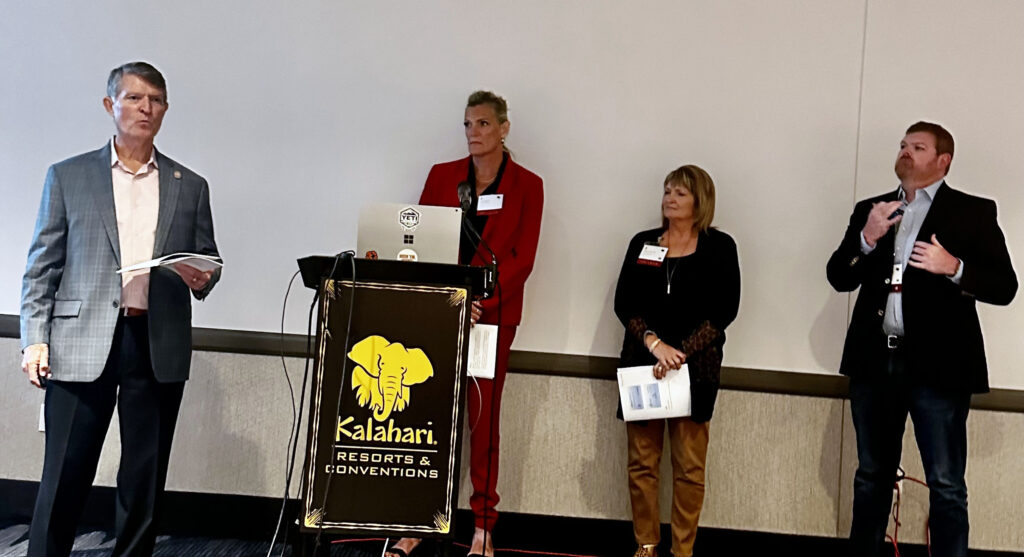
The premise driving HealthConnect is that rural hospitals will enjoy greater success when their leadership includes intentional, structured, and ongoing engagement with community leaders as one of their core best practices.
Each of the panelists, their hospitals, and communities have been participating in the HealthConnect initiative for more than 12 months. After initial buy-in from hospital leadership, the HealthConnect team surveys community leaders and conducts research to benchmark the hospital’s comparative health and the current level of community awareness, support, and engagement.
Reality versus perception
Generally speaking, our research shows that what hospital leaders assume community leaders think about the hospital is most often very different from what they actually think.
Hatch Smith’s experience in Llano reflects this, “Even though there has never been any intention or suggestion whatsoever that we took over the hospital to close it, and even though we’re involved in every community activity, and spend thousands on advertising, and have been doing so for three years, I still hear people say ‘Oh, I didn’t know you were open.’”
Lynn Falcone described it more broadly, “People don’t think about healthcare or what the hospital is doing until they need the hospital.”
While the panel shared several other examples of how community perception and hospital reality can be out of sync, Rebecca McCain’s story of how people in Electra reacted to her hospital opening a clinic in a neighboring town stands out.
“People asked me why we were spending money in another town, one where the people don’t pay taxes to support our hospital. I had to show them how providing healthcare to their neighbors creates more revenue for their hospital in Electra.”
Engagement breakthroughs
After our team completes the research phase of the HealthConnect process, and in collaboration with the hospital leadership, we facilitate a Community Leader Forum. It is an introduction to the HealthConnect process and the first of an ongoing series of facilitated working meetings.
During the forum, our research is presented, and the participating community leaders are engaged in a conversation about their personal expectations and what they believe the community should expect from the hospital. We also welcome input on issues, past or present, and work towards the resolution of these as needed.
Additionally, the forum is where the HealthConnect process of going beyond discussion and getting into action begins. Community leaders identify important opportunities ahead and challenges to be addressed. These opportunities and challenges are prioritized, and then subcommittees are created and tasked with developing and implementing a plan of action.
The results so far have been very positive according to all three panelists.
In Cuero, among the top priorities identified was the need for greater community awareness about what the hospital does, can’t do, and will do. The resulting complete turnaround in attitude Lynn Falcone described is very similar to those described by Hatch Smith and Rebecca McCain.
Lynn said, “The community thought our relationship with the Methodist Healthcare System in San Antonio meant Methodist was buying the hospital. It was so bad in town that one of the gentlemen on our board, the same board that made the decision to partner with Methodist, left the board because of a family grievance with Methodist. This gentleman has always been very critical of the hospital.
“He was one of the very first people I invited to be in HealthConnect. By helping him understand the true nature and the benefits of our relationship with Methodist, he has become a huge supporter of the hospital and is now helping out on our subcommittee for greater awareness in the community.”
Looking ahead
Building on the success achieved, HealthConnect is going into 2024 with a mandate to engage more hospitals while continuing to support and facilitate ongoing community engagement for hospitals currently in the program.
Interestingly, each of the participating hospitals are finding and developing unique ways to leverage the HealthConnect process. Hatch Smith for example has engaged his hospital’s foundation members.
“We call them ambassadors. Each of them must do a one-hour walk through of the hospital to get an understanding of what we do. When they walk around you see it in their eyes like, ‘I didn’t know y’all did this!’ When they understand what it takes to run a hospital and the cost of this and that, they are a lot more gung ho and a lot more comfortable about raising funds for the foundation”
If you would like to explore the opportunities HealthConnect can create in your community, let’s talk.
RHIA Rocks at the NRHA Critical Access Hospital Conference
By Hiedi Hughes Risk Advisor
In late September, I had the great pleasure of moderating a panel discussion at the recent

Critical Access Hospital Conference in Kansas City hosted by the National Rural Health Association. Called “Winning Ways of Women Leaders in Rural Healthcare,” the panel featured three hospital CEOs: Angela Ammons, Clinch Memorial in Homerville GA; Robyn Dunckhorst, Humboldt General in Winnemucca NV; and Stacey Gabriel, Hocking Valley Community Hospital in Logan OH.
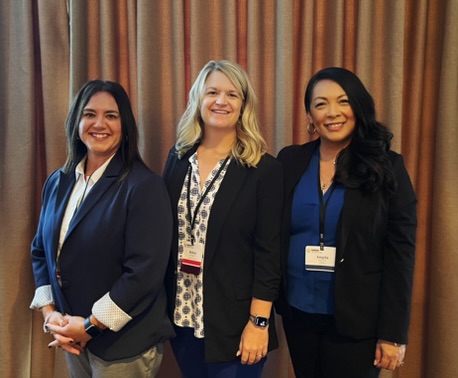
While each CEO chartered her unique path to leadership, along the way they faced similar challenges not the least of which was summed up by Robyn Dunckhorst describing her experience at a state association meeting.
“It’s the first time I’ve been in meetings where people ignored you until you stated your title.”
That’s not surprising perhaps because I am the first female CEO in the history of our hospital, and we have been in business since 1886!”
The core subjects addressed in their wide-ranging conversation included:
- How to effectively engage your community, staff, board, and other stake holders in a better healthcare conversation
- How to drive change in your hospital and community
- Some very interesting survival tactics
- And a look ahead to the future of sustainable rural healthcare
Among the many nuggets of wisdom shared, these three stood out for me:
- Stacey Gabriel: “You don’t have to be the one in the room that has all of the answers all of the time. But if you’re adaptable, flexible, open to learning and admit you’re not going to have all of the answers, then you will be better able to surround yourself with a great team.”
- Robyn Dunckhorst: “I’m not sure I have one golden rule for building trust other than just time and giving them opportunity to fail. That is big because you learn a lot from failure and you learn a lot from showing grace through failure… how somebody responds to failure is where you develop trust.”
- Angela Ammons: “Make no bones about it, you have to put in the work. And I think a lot of people who are graduating with MBAs or MHA’s are misguided about what it means to be in charge. If you think you’re going to work 8 to 4:30, be off on Fridays, leave when you want… well, it’s the opposite. You work twice as hard as everyone else because you’re responsible for the entire facility. And it doesn’t matter what it is, if anything happens, you’re the one who’s wearing orange.”
I would like to thank the NRHA for the opportunity to bring this panel together and express my most sincere gratitude for the generosity and openness each of the panelists brought to the table.
©2023 HealthSure, All rights reserved.
The information provided in this newsletter is not, is not intended to be, and shall not be construed to be, either the provision of legal advice or an offer to provide legal services, nor does it necessarily reflect the opinions of the HealthSure, our lawyers or our clients. This is not legal advice. No client-lawyer relationship between you and our lawyers is or may be created by your use of this information. Rather, the content is intended as a general overview of the subject matter covered. HealthSure is not obligated to provide updates on the information presented herein. Those reading this alert are encouraged to seek direct counsel on legal questions.

